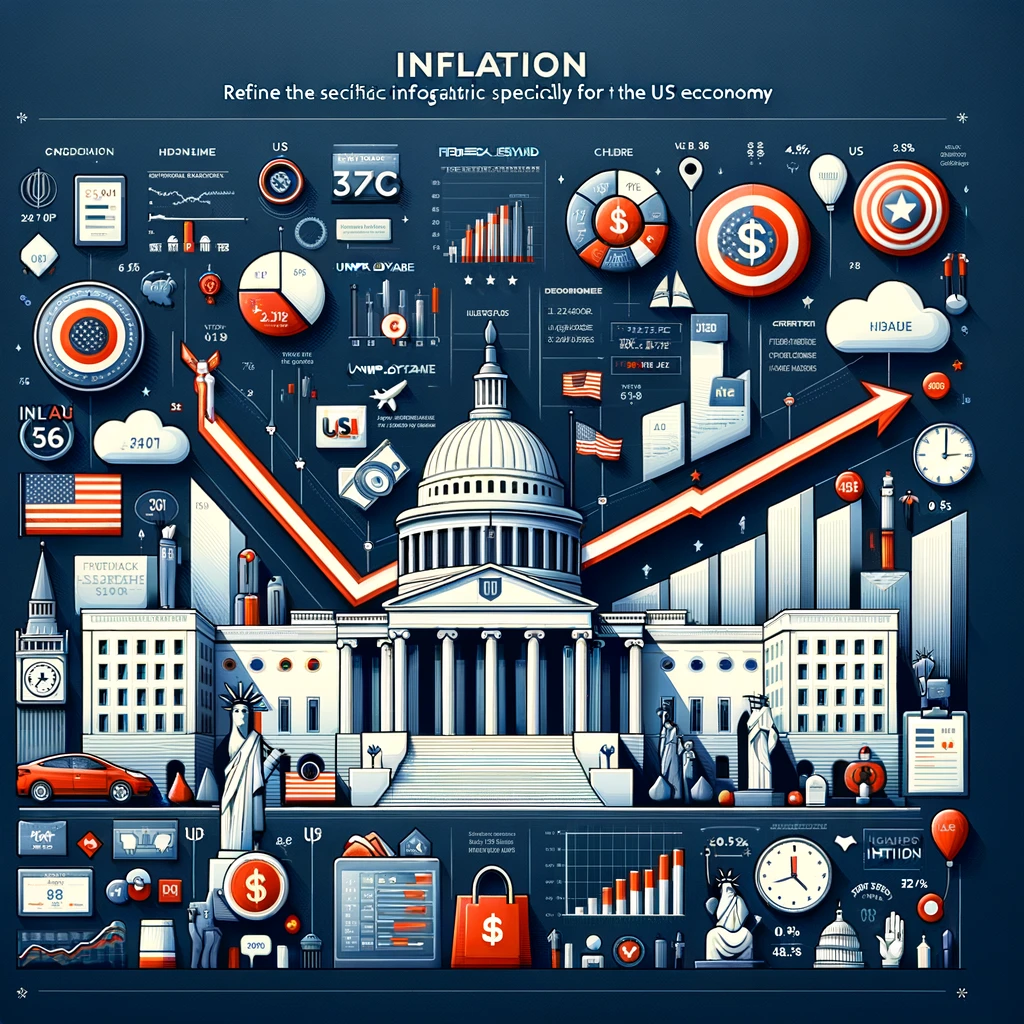Navigating Fluctuating Inflation: A Look at Recent Data and Expectations
2023-05-01

Recent CPI Data Shows Fluctuating Inflation Trend and Potential Moderation
The latest monthly data on the Consumer Price Index (CPI) for All Urban Consumers All Items in U.S. City Average reveals a fluctuating trend in inflation. In March 2023, the year-over-year change in CPI stood at 4.9%, marking a significant decline from the previous months. This dip warrants attention as it contrasts with the peak inflation rate of 9.0% recorded in June 2022. The broader context is equally intriguing; the CPI's average year-over-year change in 2021 and 2022 was 4.7% and 8.0%, respectively. The observed trend may indicate a potential moderation in inflationary pressures, albeit it's crucial to interpret these figures with caution given the volatility in today's economic landscape. It's essential to closely monitor future CPI releases to discern whether the observed decline in inflation persists or rebounds. This data signifies a potential easing of inflationary pressures, but the longer-term trajectory remains uncertain.
Volatility in Sticky Price CPI Reflects Shifting U.S. Inflation Expectations
The latest monthly data on the Sticky Price Consumer Price Index (CPI) shows some noteworthy trends. In January 2023, the year-over-year change in the Sticky Price CPI stood at 64.6%, but by March 2023, it had dropped significantly to 41.7%. Over the past year, we've witnessed substantial volatility, with the index reaching a peak of 152.7% in August 2022. This recent roller-coaster ride in the Sticky Price CPI marks a substantial deviation from the relatively stable and low levels seen in earlier years, such as the 8.2% in 2018 and 5.0% in 2019. Even when considering the pandemic-induced deflation in 2020, the subsequent surge to 130.2% in 2022 and the subsequent drop to 53.2% in 2023 indicate substantial turbulence in the economy. These fluctuations have noteworthy implications for U.S. inflation. The sharp decline in the Sticky Price CPI from August 2022 to March 2023 signals a potential slowdown in inflationary pressures within certain goods and services. While the previous surge in the index might have signaled concerns about rising future inflation, the recent decrease suggests a possible easing of these concerns. This downturn aligns with the Federal Reserve's hawkish stance and its intention to tighten monetary policy in response to inflationary pressures. In conclusion, the recent volatility in the Sticky Price CPI reflects the broader economic uncertainty and the ongoing efforts to manage inflation. While a more stable trend in the index would be preferable for economic stability, the current fluctuations provide valuable insights into the evolving nature of inflation expectations and the potential impacts on the U.S. economy. It's crucial to continue monitoring these trends closely to navigate potential future economic shifts effectively.
University of Michigan's Surveys of Consumers: Trends in Inflation Expectations, May 2022 - April 2023
The University of Michigan's Surveys of Consumers provides valuable insight into inflation expectations, specifically the median expected price change over the next 12 months. The latest monthly data reveals several noteworthy trends. In May 2022 and June 2022, the inflation expectation stood at 5.3%, displaying stability. However, a mild decrease to 5.2% was observed in July 2022, followed by a more significant drop to 4.8% in August 2022, and a further decline to 4.7% in September 2022, suggesting a potential shift in sentiment. This downward trend continued until January 2023, as the inflation expectation fell to 3.9%. However, in February 2023, there was a slight uptick to 4.1%, followed by another decrease to 3.6% in March 2023. Notably, April 2023 witnessed a considerable rebound to 4.6%. These fluctuations indicate a degree of uncertainty and changing projections regarding future price changes. The sustained deviation from the earlier elevated levels suggests that consumers might be adjusting their inflation expectations in response to evolving economic conditions. These shifts could have implications for various economic sectors and policymaking, warranting continued monitoring and analysis.
February 2024 Breakeven Inflation Rates: Moderately Stable Expectations Across Time Horizons
The latest monthly data on the Breakeven Inflation Rate (Federal Reserve Bank of St. Louis) for February 2024 indicates the following rates: - 5-Year: 2.35% - 10-Year: 2.3% - 30-Year: 2.23% These rates represent the market's expectation of inflation over the respective time horizons, derived from the difference in yields between Treasury Constant Maturity Securities and Treasury Inflation-Indexed Constant Maturity Securities. The breakeven inflation rate serves as a crucial indicator for investors and policymakers, offering insights into market expectations for future inflation. The current data reflects a relatively moderate and stable inflation expectation across different time horizons, which can influence investment decisions and monetary policy considerations.
Federal Reserve Bank of Cleveland's April 2023 Expected Inflation Rates
The latest monthly data on expected inflation from the Federal Reserve Bank of Cleveland, as of April 2023, indicates the following expected rates of inflation: 1-year at 2.64%, 2-year at 2.37%, 5-year at 2.13%, and 10-year at 2.1%. These estimates are derived from a model that incorporates Treasury yields, inflation data, inflation swaps, and survey-based measures of inflation expectations. The numbers suggest a consistent, albeit moderate, expected increase in inflation over the short to medium term, with a slight decrease in the 10-year expectation compared to the shorter-term outlook. This data is crucial for businesses, policymakers, and investors to gauge future price pressures and make informed decisions regarding investment, monetary policy, and risk management strategies.
